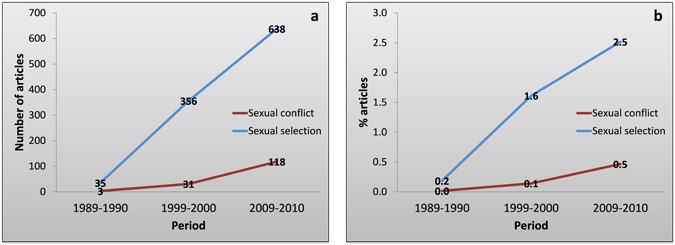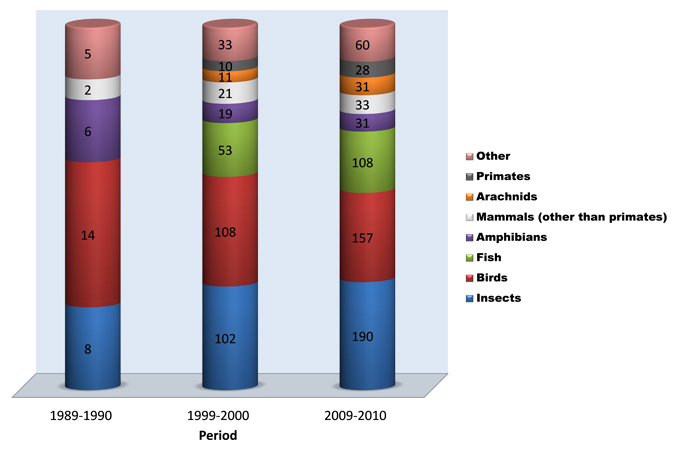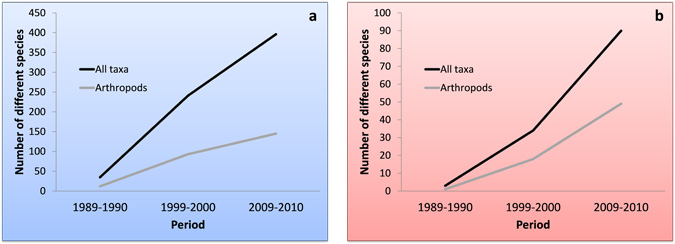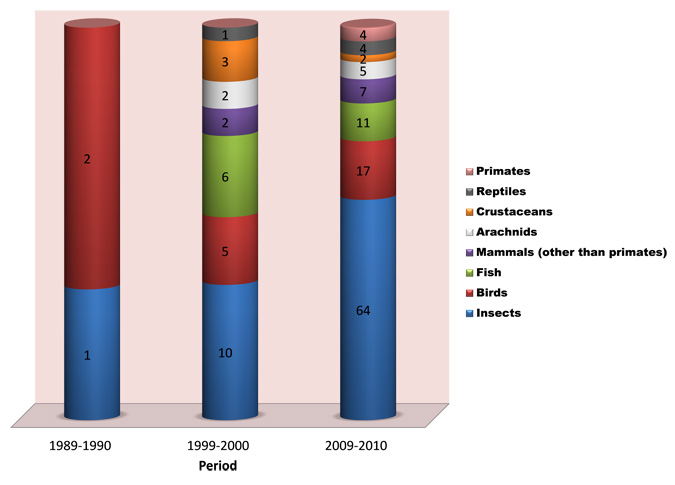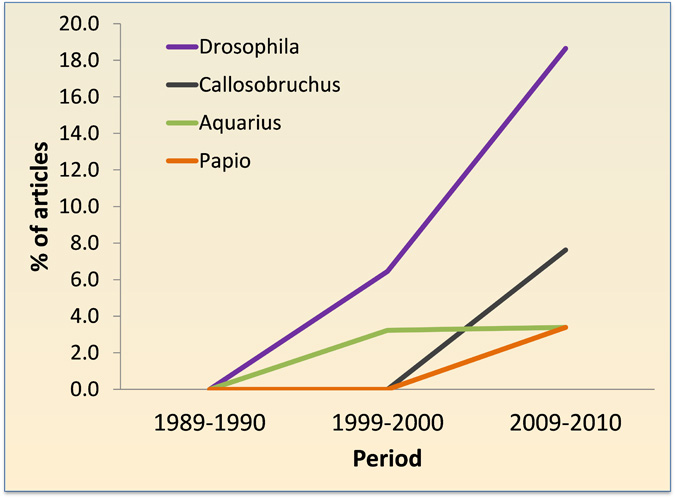
Full text loading...
Although model systems are useful in entomology, allowing generalizations based on a few well-known species, they also have drawbacks. It can be difficult to know how far to generalize from information in a few species: Are all flies like Drosophila? The use of model systems is particularly problematic in studying sexual selection, where variability among taxa is key to the evolution of different behaviors. A bias toward the use of a few insect species, particularly from the genus Drosophila, is evident in the sexual selection and sexual conflict literature over the past several decades, although the diversity of study organisms has increased more recently. As the number of model systems used to study sexual conflict increased, support for the idea that sexual interactions resulted in harm to females decreased. Future work should choose model systems thoughtfully, combining well-known species with those that can add to the variation that allows us to make more meaningful generalizations.

Article metrics loading...

Full text loading...


Data & Media loading...
Supplemental Material
Download Supplemental Data Set (XLSX) Download all other Supplemental Material as a single PDF. Includes: Supplemental Figure 1. (a) Number of empirical articles on sexual selection (including sexual conflict) and on sexual conflict in the 14 journals in our survey, across the three periods examined. Numbers above the lines indicate number of studies. (b) Percentage of studies on sexual selection (including sexual conflict) and on sexual conflict, out of the total number of articles published in the 14 journals in our survey, across the three periods examined. Total number of papers published for each period, in chronological order, in these journals is 18964, 22091 and 25342 (Web Of Science, Thomson Reuters). Numbers above the lines indicate percentages. Supplemental Figure 2. Temporal patterns in the use of model systems in sexual selection research as estimated in our survey of 14 journals. The proportional distribution of each group within each period is shown in each bar. Numbers indicate the number of studies using a particular group. Supplemental Figure 3. Number of species used in sexual selection (a) and sexual conflict (b) research across time in our sample. Data for all taxa and for only arthropods are shown. Supplemental Figure 4. Temporal patterns in the use of model systems in sexual conflict research as estimated in our survey of 14 journals. The proportional distribution of each group within each period is shown in each bar. Numbers indicate the number of studies using a particular group. Supplemental Figure 5. Percentage of use of the four most common genera in empirical articles on sexual conflict in our survey, across periods. The percentage is calculated as the number of articles on sexual conflict using a particular model system out of the total number of articles on sexual conflict for that period. Total number of papers on sexual conflict for each period, in chronological order, is 3, 31, and 118.